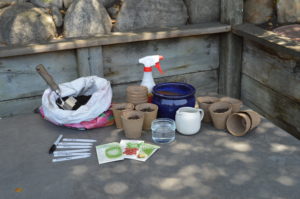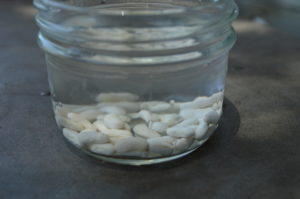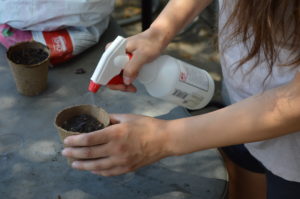Planting Seeds Successfully
Growing plants from seed and witnessing your garden sprout from bare earth and come to life, is quite satisfying. This method also gives you the greatest range of economical plant options; a packet of seeds can produce dozens or even hundreds of plants and, if stored properly, will usually last for one or more additional seasons, depending on the type of plant.
The packet the seeds come in will provide helpful information about planting, such as when to plant and how deeply and densely to sow the seeds. Some plants, such as sunflowers or poppies, are best sown directly in the garden soil outdoors. This is often because they are plants with a tap root, a tapering main root (like a carrot, for example) that grows straight down, and they don’t transplant well. Most seeds, however, can be started indoors a month or two ahead of the time to plant outside. By following these steps, you’ll have healthy seedlings that are ready to plant outdoors at the appropriate time, see Planting Guide.
Materials List:
- Seeds
- Jar of water
- Potting soil or seed-starting mix
- Horticultural sand (only for very small seeds)
- Clean containers
- Plant labels
- Sharpie pen
Steps:
 Soak Seeds: For best results, soak seeds in room temperature tap water for a few hours or overnight. Seeds with a heavy black skin should be nicked lightly with a nail file and then soaked for several hours. Very fine seeds should not be soaked at all. Drain the seeds before planting.
Soak Seeds: For best results, soak seeds in room temperature tap water for a few hours or overnight. Seeds with a heavy black skin should be nicked lightly with a nail file and then soaked for several hours. Very fine seeds should not be soaked at all. Drain the seeds before planting.- Prepare Planting Medium: Moisten the soil mix lightly but thoroughly. Make sure containers are clean (wash in a 10 percent bleach solution to kill any pathogens). Fill the containers to the top with soil.
- Sow Seeds: Plant one or more seeds in each container at the depth recommended on the seed packet (usually about the same depth as the size of the seed). You can plant two or three seeds in each container or planting cell and if more than one germinates, you clip off all but the strongest seedling. To sow very fine seeds, mix them with a small amount of horticultural sand and then spread the seed-and-sand mixture lightly and evenly over the top
 of the soil.
of the soil. - Water Gently: Using a hose with a misting attachment or a watering can with fine holes at the spout, water the seed containers thoroughly, making sure that they have good drainage.
- Attach Label: Write the plant and variety name on the plant label as well as the date of planting and attach it securely to the container.
- Keep Warm and Moist: Until seeds germinate, they need warmth more than they need heat. Place the containers on a heat mat or in some other location where they’ll stay warm. Keep them evenly watered (but not soggy). When seedlings emerge, move to a bright, sunny location with good air circulation and continue regular watering until plants are ready to transplant.